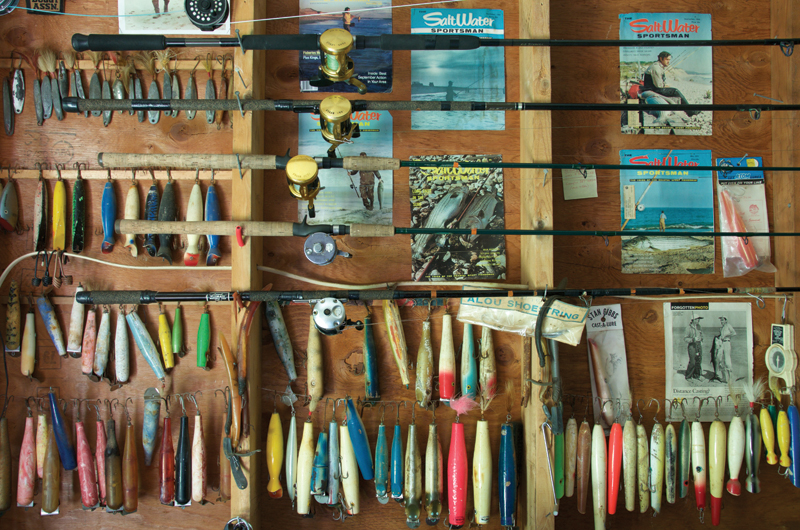This is the twentieth “Notes from the Tackle Room” column that I have written, and it occurs to me that perhaps, for the Home & Garden issue, I should elaborate on what this room consists of.
Physically, it is a 14-by-8-foot space at the end of my garage, enclosed by an open stud wall and an interior doorway, easy and inexpensive to install whether you are building from scratch or modifying existing space. There is also an exterior door to facilitate carrying tackle in and out, and the unfinished walls lend themselves to storing fishing rods horizontally on nails or pegs, with lures hung on wire strung between the studs. There is a workbench consisting of a wooden door supported by cabinets whose drawers are full of fly-tying stuff. A couple of old crates create more horizontal surfaces and storage space along the sidewalls, and there are pegs on the front wall to hang waders and slickers. That’s it – a simple and totally functional tackle room fashioned from inexpensive materials.
More important, it is the repository of nearly eighty years of fishing tackle and memorabilia, a virtual autobiography of my angling life. There are block tin squids from the 1930s, ’40s, and ’50s, and wooden plugs from the post–World War II era, when lure manufacturers sprung up in garages all over New England as millions of servicemen were discharged from
active duty and turned to the sea for sport. Decorating the walls are Salt Water Sportsman covers that I took when I worked at the magazine from 1956 to 1973, plus photos and sketches by myself and others as well as retired lures and flies that accounted for personal best catches. And there are old derby buttons and citations from younger days when I was a serious competitor. In addition to its functionality, I think of the tackle room as a small
museum of which I am the curator.
It also represents a continuum from my boyhood summers on the Jersey coast, where I was imprinted forever by the family fishing contest in which I was raised in the late 1930s and early ’40s. The command center was the tackle room in my grandfather’s house, “Upsandunes,” and the participants included my father, my grandfather, two uncles, and three aunts. They were assigned their own area of the room to keep rods, reels, boots, slickers, tin squids, hooks, sinkers, and other gear, and there was a blackboard on which daily, weekly, monthly, and seasonal scores were kept for the largest striped bass, bluefish, weakfish, croaker, kingfish, and flounder. The aroma was of sea mist and oilskins, and I grew up there and on the beach, a willing and devout student of a pastime that I would practice into the next century.
My tackle room today is not only a reminder of those days, but evidence that in many ways I never really grew out of them.





